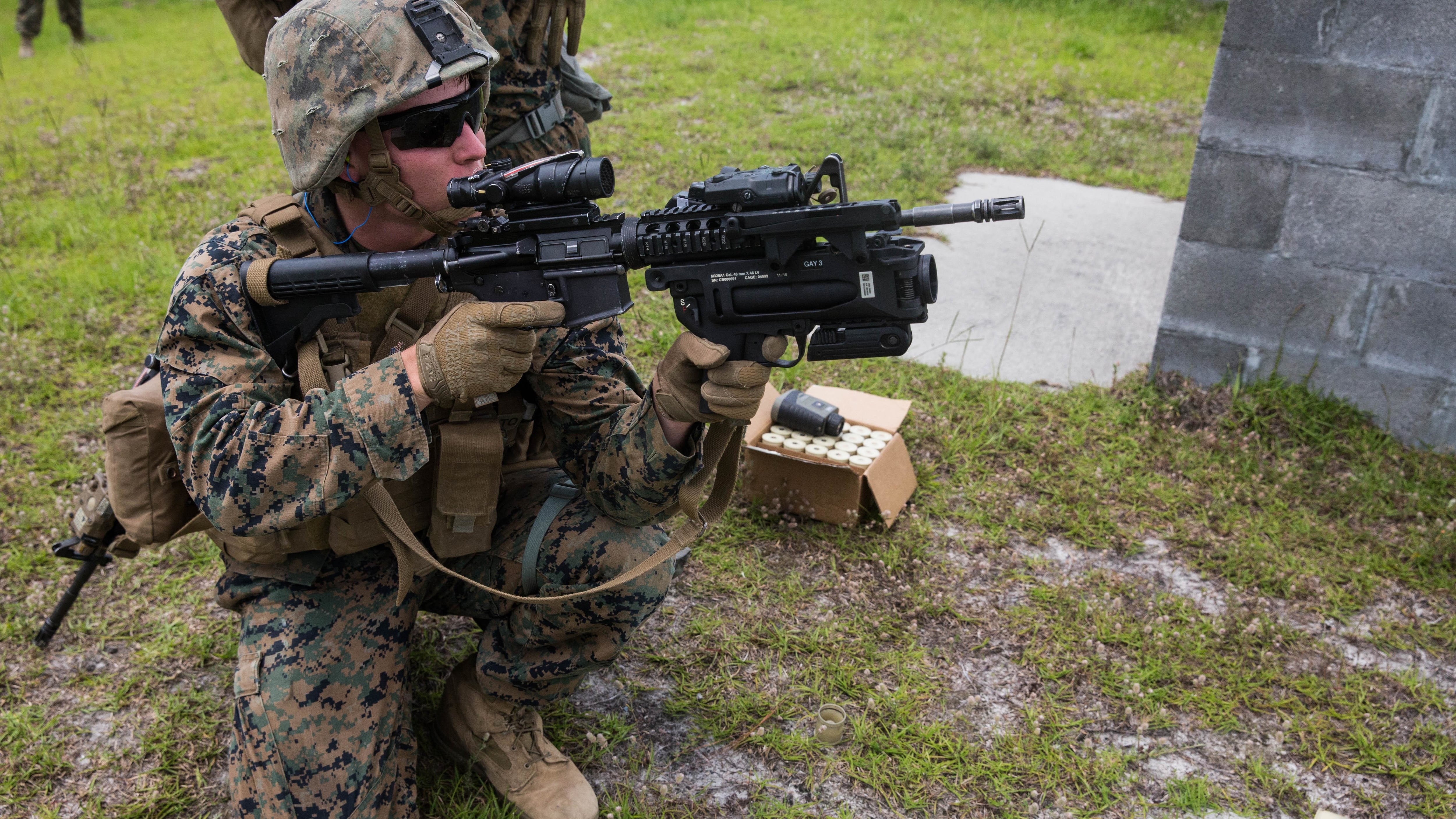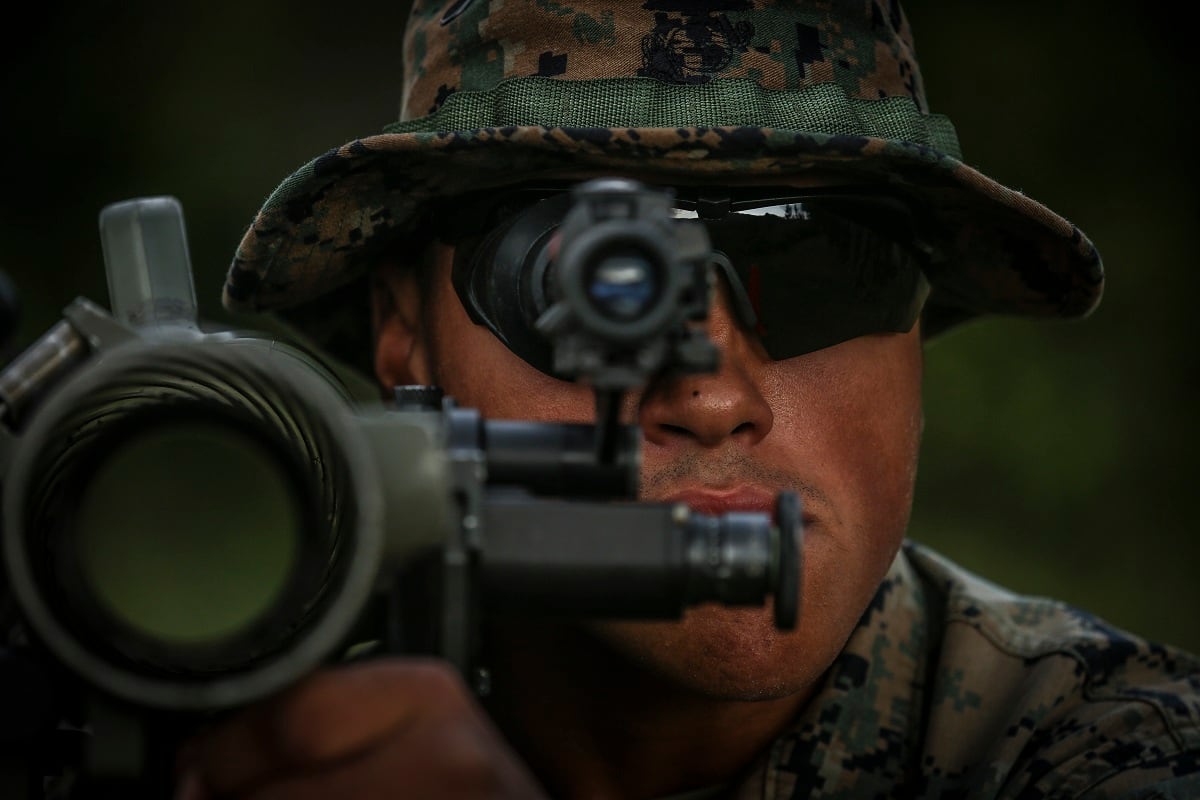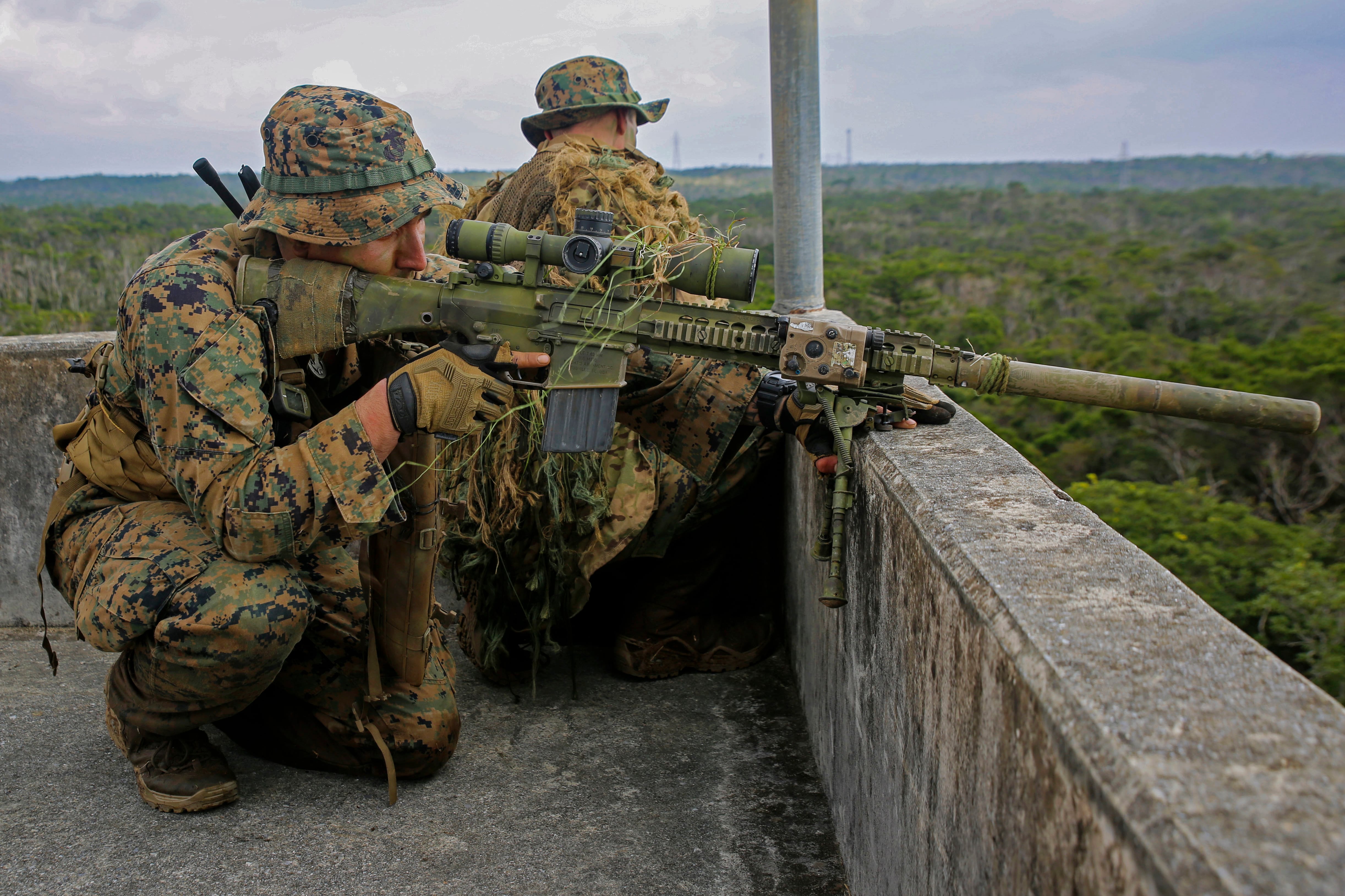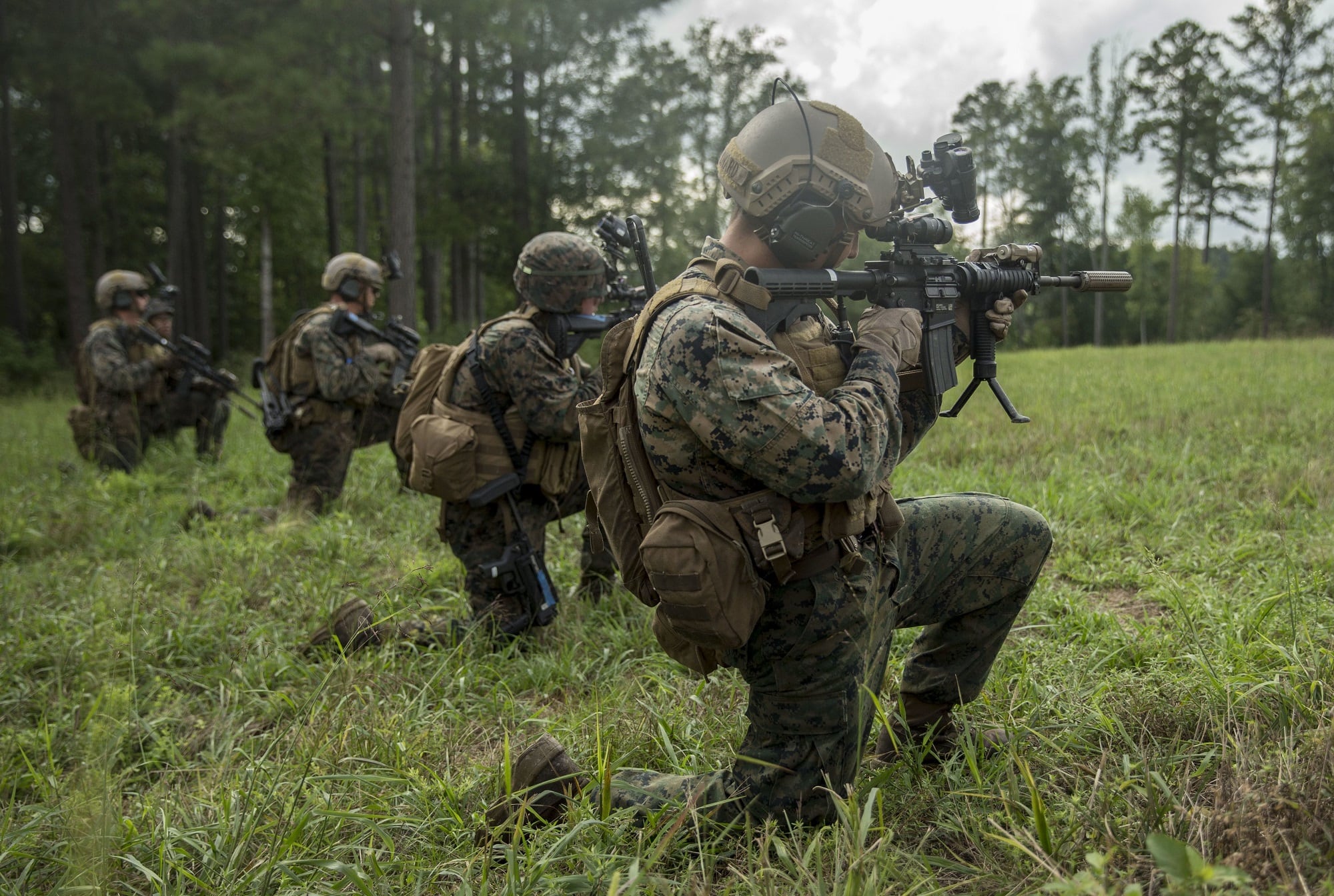For many years, the 13-man rifle squad has been the lynchpin of how combat power is built and organized within a ground combat element or Marine infantry unit.
But now Marine Commandant General Robert B. Neller is considering big changes to the size and tasking of the rifle squad, a move likely to have a major impact on the Corps’ culture and operations.
And beyond the rifle squads, Neller also plans to add an additional eight Marines to the scout sniper platoons that support infantry battalions, expanding the platoons up to potentially 28 Marine snipers.
Neller is considering new rifle squad configurations that include 11-man, 12-man and 14-man options. While Neller hasn’t yet decided on the size of the rifle squad, it’s likely he will add a drone operator.
“The 13-man rifle squad has served us very very well over time,” Brig. Gen. Christian Wortman, the commanding officer of the Marine Corps Warfighting Laboratory, said Tuesday. “But with new technology and new capabilities developing, there’s a recognition that there’s an opportunity to better exploit that technology and that capability and to adapt how we structure the rifle squad.”
Wortman spoke publicly about the changes for the first time Tuesday with reporters at the Pentagon. The changes are based on lessons learned from a series of exercises known as Sea Dragon 2025 involving an experimental Marine infantry unit.
The recommended changes come at a time when the Marines are rapidly trying to adapt to rising near-peer competitors like Russia and China, which means the Corps needs a more sophisticated, agile, mobile and tech-savvy force capable of engaging enemy forces in everything from cyber warfare to the electromagnetic spectrum.

Gen. Neller has decided add a drone and electronic warfare operator at the platoon level.
The commandant has yet to make a decision on the size and organization of the rifle squad, but a decision is pending soon, Wortman said.
The common factor among the 14-, 12-, or 11-man squad is the addition of a systems operator capable of operating both Unmanned Aerial Systems and electronic warfare equipment.
For the 12-man option, the Marines would transition from three fire teams of four Marines into two fire teams of five Marines, with a systems operator and squad leader.
The 11-man option would see the same three fire teams, but smaller in size. Each fire team would be comprised of three Marines plus a system operator and squad leader.
The 14-man option would leave the current squad’s configuration unchanged but add an additional Marine as a systems operator.
Lethality of grunts
The Corps is also making sweeping changes to squad-level weapon systems to boost the lethality and range of its grunts.
Marines are planning to replacing the standard M4 carbine with the M27 Infantry Automatic Rifle, or IAR, for most grunts in the infantry squads. The only question remaining is: “which leaders don’t carry the IAR, but instead carry the M4?” Wortman said.
The IAR is a heavier rifle, and Wortman said the systems operator or squad leader might be better off sticking with a lighter weapon like the M4 while simultaneously trying to operate multiple other tech devices to include drones and tablets for command and control.
Meanwhile, the Corps is also moving to replace the Mk 153 Shoulder-Launched Multipurpose Assault Weapon with the 84mm Carl Gustaf recoilless rifle, and the M320 grenade launcher in place of the M203. The M320 is more lethal and has longer range, Wortman said.

Drones will be fielded at the squad, platoon and company levels, with priority given to squads to help “enhance situational awareness of small unit leaders,” Wortman said.
The Marines also tested “switchblade” drones at the company level. Switchblades are a kamikaze-style drone that carry an explosive warhead and are flown directly into an enemy force or vehicle.
The Corps also experimented with various ground robotic vehicles and electronic warfare tools. Those pieces of tech and their future employment are still being refined.
More snipers
The commandant has already made sweeping changes at the platoon, company and battalion levels based on recommendations from Sea Dragon 2025.
Neller is moving ahead with plans to expand scout sniper capacity in the infantry battalion. Those changes will primarily be personnel: an additional eight Marines will be added to the scout sniper platoon, Wortman said.
“We have always had more demand for surveillance, reconnaissance, and collections capability than has been resident in the infantry battalion scout sniper platoon,” Wortman said. “What we have often seen over time is infantry battalions have pursued additional capacity without it being built into the structure of the battalion.”

The Marines have learned from previous conflicts that snipers can aid in precision fires and reconnaissance while operating in complex urban terrain, something they would still face against a more sophisticated adversary.
The Corps will also provide more tools and equipment to the intelligence cells within the rifle company to boost situational awareness and precision fires.
At the battalion level, the Corps plans to enhance information operations capabilities. That includes adding an information environment operations officer, information management officer and an additional forward air controller.
And the Marines are still looking at more tools to aid in information operations “to be able to support influence operations in a contested area of operations,” Wortman said.
Influence operations have been the mainstay of counterinsurgency warfare for the last 16 years in the Middle East. The Corps will continue to need those skills sets to work with local populations in complex urban environments, to help shape public opinion and perception of ongoing U.S. military operations.
Enhanced NCO training
Enhanced training for noncommissioned officers has been one of the most important lessons learned from Sea Dragon 2025 and the experimental unit known as the 3rd Battalion, 5th Marines.
Despite all the gear and organizational changes stemming from Sea Dragon 2025, the Corps found that enhanced military occupational specialty, or MOS, training was one of the most important lessons learned from the yearlong effort.
“The most valuable asset we have is our noncommissioned officers and company-grade leaders,” Wortman said.
During Sea Dragon 2025, the Marines invested heavily in advanced MOS training for its squad leaders and fire team leaders.

The enhanced training resulted in “significant increases in the capability of each echelon of command inside that infantry battalion. That can be attributed to equipment that we provided to them, but it was a common observation that the most powerful tool was the enhanced capability from the enhanced MOS training for our noncommissioned officers,” Wortman said.
Better training made junior leaders more capable of multitasking and incorporating technology.
Many of the changes the Corps is making to the infantry squad is technology-driven to ensure the Marines have the tools to operate in contested environments.
Shawn Snow is the senior reporter for Marine Corps Times and a Marine Corps veteran.




